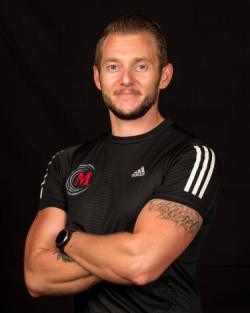My name is Aurelien, but everyone calls me Coach “Aure.” Much easier for Americans…Right? French Coach, Body Preferences Analyst, and Sports Conditioning Specialist at Hartland Movement Center. Today, I would like to introduce you to the field of Body Preferences. This European Science-based method to analyze people’s natural movement is becoming increasingly popular among sports professionals overseas. While this approach is still unique in the USA, I firmly believe it is the future of training.
IN BRIEF
We are born with different physical Preferences. That is a fact! Therefore, some exercises will be more natural, smoother for you, and a struggle for your gym mate, and vice-versa! The idea behind science is to assess your body preferences to train you. it will maximize your performance and reduce the risk of countless potential injuries.
PERSONAL DEVELOPMENT
First, let’s talk about my own experience. When introduced to this new world of body comprehension a few years ago, it was THE missing piece of my training. I was already advocating for a “one size doesn’t fit all” kind of training. Still, the Biomechanics Preferences gave me all the answers I was looking for. I understood why I was able to perform some exercises easily, while others were a struggle. I used to work hard on my weaknesses to become better and stronger. Instead, it took me too much energy and joy from my training and led to body discomfort sometimes. It likely happens to you as well, right? When I discovered my Biomechanics Preferences, I changed my training session. It was a game-changer: I enjoyed my session, trained in my strength, and got me better results instantly… and the confidence that comes with it. I listened to my natural body pattern and became more coordinated, and more energy-efficient. Although I could do better on those exercises that I was struggling with, they would never be my strength. You know what? It is ok! I have other strengths that I can show off too. In the end, I knew my body capacities and could play with them properly, in my own system, my best profile. Then, I started to apply these principles to my student. Every time, the results amazed me: A game-changer for them and for me.
Now, let me introduce you to another pioneer in the field here in the USA: my friend Fabien Lefevre, Olympic Champion (silver and bronze medal), and ten times World Champion of Whitewater Canoe and Kayak.
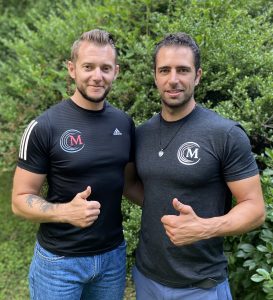
“In the middle of my sports career, I’ve been fortunate to be coached with biomechanics preferences. It allowed me to train efficiently using my body’s natural preferences and avoid countless potential injuries trying to train on my “weaknesses.” The body has intelligence, and the preparation needs to be individualized. We all have specific patterns of movements we create between 0 to 8 years old. It is totally possible to transfer the knowledge and practices of top performance in sports to everyone’s fitness goals. All lies in the quality of the assessments.“
DO THE TEST
Cross your hands together and see which thumb is on top. Left, or Right? Me, it is Left. My wife? The right thumb. There are our “Physical Preferences.” Now, do the reverse: Uncross your hands and try to put the other thumb on top. Weird, right? Unnatural.
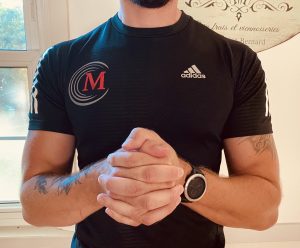
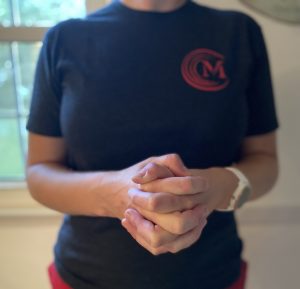
Then, imagine if you are the “World Champion of Crossing Hands,” and your Coach decides to teach you what he thinks is a perfect way, the proper technique to cross hands. Unfortunately, it goes against your preference. Of course, after a while, you should be able to perform this movement. But you never will be as efficient and fast if you train on your best side. Period! Do it, you will see it!
Arms Crossing is another test that highlights a physical preference. As you can see, my wife and I are quite the opposite. And we are both right-sided. It doesn’t matter. There is not a better way to cross your hands or arms, only your way. You don’t think about it, that is natural.
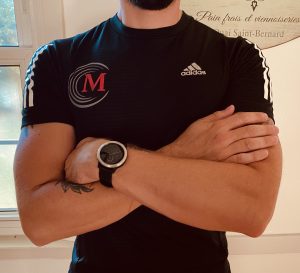
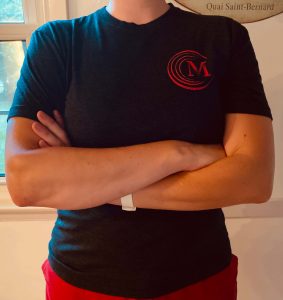
To reveal your Biomechanics Preferences, you need to undergo an individualized assessment composed of various coordination tests. You will also be screened on your posture, walk, and running patterns. For your sport of interest, you will be put in real condition. In the end, you will be surprised to discover how your personality impacts your biomechanics preferences!
GOAL
Use your biomechanics preferences to acquire your best profile and use it in your everyday training. It will optimize your session, maximize your performance, and dramatically reduce the risk of injury. It will put you back at the heart of your system. The one who belongs to you, who defines what you are. We are all unique and need to train that way.
It will also give you the key to use your innate strength in your favorite sports. It will teach you how to properly use your biomechanics preferences in every situation that your specific sport can offer. You will quickly increase your movement patterns, coordination, and dramatically enhance your performance. Ready to use your very own system and unleash your full potential?
OUTCOME
Are you grounded (terrestrial) or aerial? (Read Below) How does your spine work: in dissociation or association? (I will talk about that on my next blog around Golf Biomechanics Preferences) What Muscles Chain are you prioritizing? Am I using my natural running patterns? Will you be better made for concentric force or plyometric exercises? What is your energy system preference? What is your pivot leg? What is your posture of choice to enhance your coordination? … and much more to know… a long list of preferences to find out!!
GROUNDED OR AERIAL
One of my biggest passion is soccer. Here you can find two french players. Kylian Mbappe and Olivier Giroud. France, won the last world cup with them, as Forward’s first-team Player. They are two distinct players. But, they are both efficient in different ways, in their system. In my opinion, they are complementary players.
Note: I have analyzed athletes on videos but did not test them. Although my explanations are simplified, the assessment reveals in-depth information. We could do that analysis for every sport.
 Olivier Giroud is GROUNDED. He will prioritize an acceleration by using his hips first and have his body mass more backward. He will have more activation from his Anterior muscle chain. The grounded loves having more body flexion. This type of soccer player loves the contact with other players and favor endurance with a start and stop style of play. It doesn’t mean that they can’t have a good speed. If you are a defender and want to stop him, better be far to him and observe his next move. Tip to stop him: Block his hips with your hands or arms, he won’t like it… 😉
Olivier Giroud is GROUNDED. He will prioritize an acceleration by using his hips first and have his body mass more backward. He will have more activation from his Anterior muscle chain. The grounded loves having more body flexion. This type of soccer player loves the contact with other players and favor endurance with a start and stop style of play. It doesn’t mean that they can’t have a good speed. If you are a defender and want to stop him, better be far to him and observe his next move. Tip to stop him: Block his hips with your hands or arms, he won’t like it… 😉
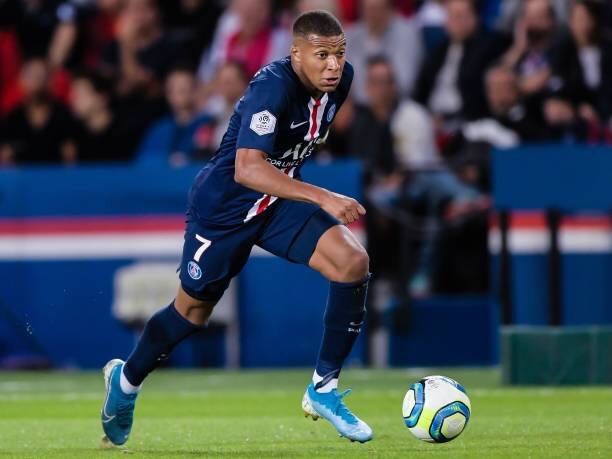 Kylian Mbappe is AERIAL. He will prioritize acceleration by using his shoulders first and have his body mass more frontward. He will have more activation from his posterior muscle chain. The aerial loves having more body extension. This type of soccer player loves to eat space and favors a fast pace, more speed with no stop in his run. It doesn’t mean that they can’t be good at endurance. If you are a defender and want to stop him, better be close to him all the time and close that gap. Tip to stop him: Block his shoulders with your hands or arms, he won’t like it… 😉
Kylian Mbappe is AERIAL. He will prioritize acceleration by using his shoulders first and have his body mass more frontward. He will have more activation from his posterior muscle chain. The aerial loves having more body extension. This type of soccer player loves to eat space and favors a fast pace, more speed with no stop in his run. It doesn’t mean that they can’t be good at endurance. If you are a defender and want to stop him, better be close to him all the time and close that gap. Tip to stop him: Block his shoulders with your hands or arms, he won’t like it… 😉
The most important part of their training: use their innate strength, and use with efficiency on the field. Would I do the same physical conditioning for those two players? No, because they favored two different systems. They do not activate the same muscle chains. To prevent injury, they will have different areas to monitor. To maximize their strength, they would work on different strategies and exercises. Also, they need different instructions on how to use their force on the field. With better control of the environment, the chance of success is highly increased.
Time to be back in the heart of your system. Train in your Strength. Play in your Strength. A bientot!
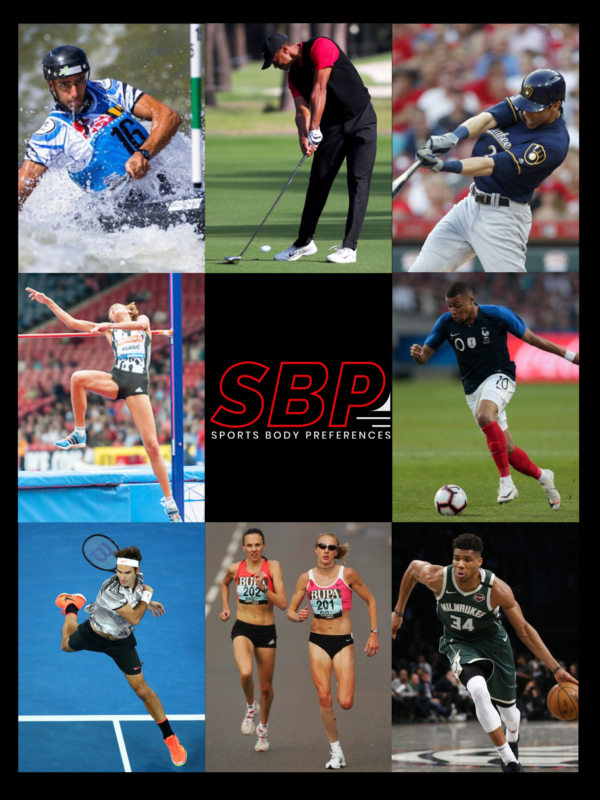
http://www.sportsbodypreferences.com
RESSOURCES
VOLODALEN – LES PREFERENCES MOTRICES – BIOMECHANICS PREFERENCES USA
– 2 marches pour la machine humaine (Two walks for the human body), Sohier R. et Haye M., éd. Kiné-Sciences (1989)
– Les chaînes musculaires (The Muscles Chains), Busquet L., Busquet-Vanderheyden M., tome 1 et 2, éd. Busquet (2015)
– Etes-vous terrien ou aérien (Are you Terrestrial/Grounded or Aerial), Gindre C., Hippolyte R., Théraulaz B., Science et vie (2016)
*Terrien / Aérien / Tige / Liane : Termes utilisés pour la première fois par Gindre C. (Laboratoire VOLODALEN) et Lussiana T.,
“Aerial and terrestrial patterns: a novel approach to analyzing human running” dans International Journal of Sports Medicine, (Octobre, 2015)

